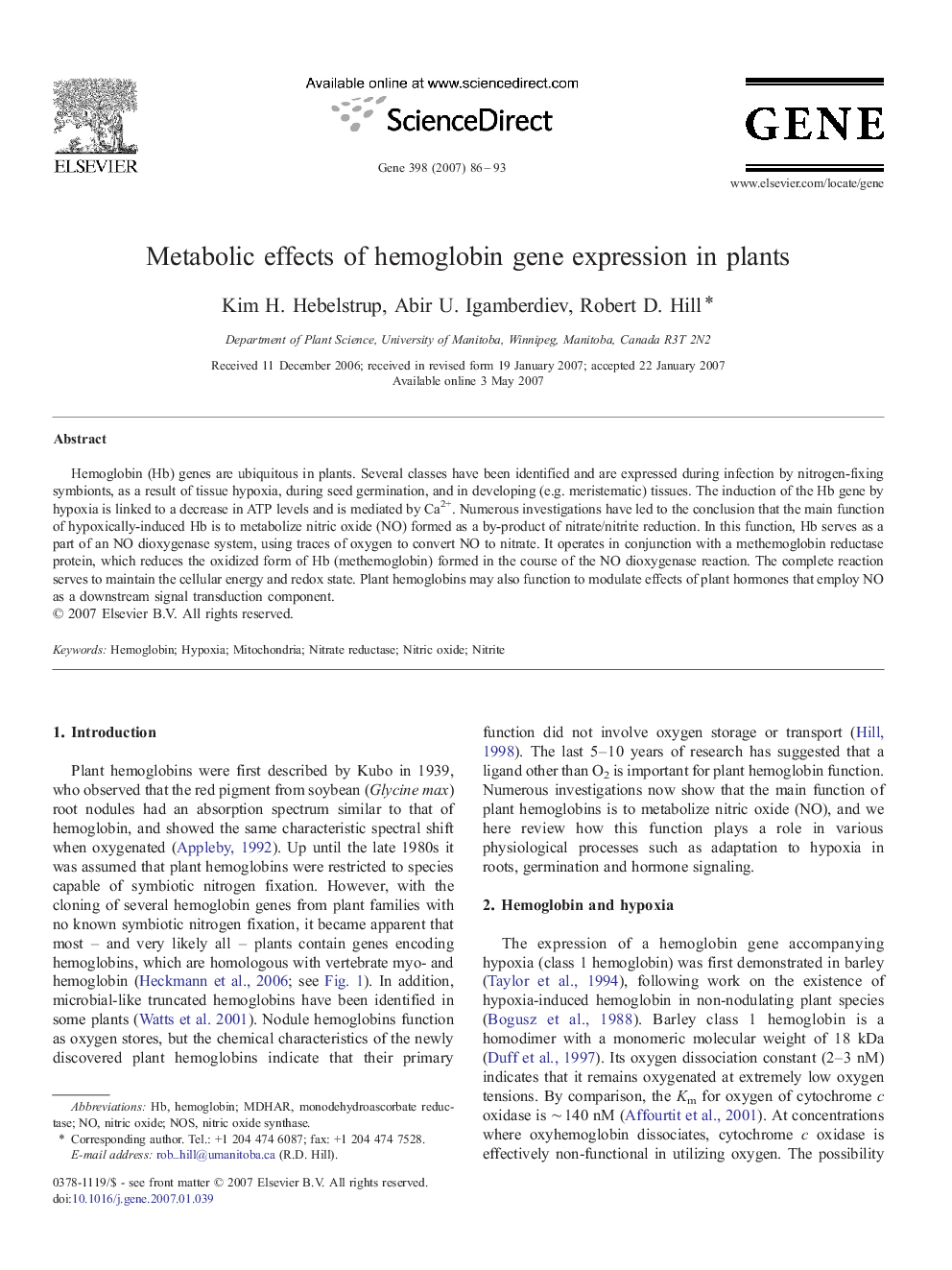| Article ID | Journal | Published Year | Pages | File Type |
|---|---|---|---|---|
| 2819644 | Gene | 2007 | 8 Pages |
Hemoglobin (Hb) genes are ubiquitous in plants. Several classes have been identified and are expressed during infection by nitrogen-fixing symbionts, as a result of tissue hypoxia, during seed germination, and in developing (e.g. meristematic) tissues. The induction of the Hb gene by hypoxia is linked to a decrease in ATP levels and is mediated by Ca2+. Numerous investigations have led to the conclusion that the main function of hypoxically-induced Hb is to metabolize nitric oxide (NO) formed as a by-product of nitrate/nitrite reduction. In this function, Hb serves as a part of an NO dioxygenase system, using traces of oxygen to convert NO to nitrate. It operates in conjunction with a methemoglobin reductase protein, which reduces the oxidized form of Hb (methemoglobin) formed in the course of the NO dioxygenase reaction. The complete reaction serves to maintain the cellular energy and redox state. Plant hemoglobins may also function to modulate effects of plant hormones that employ NO as a downstream signal transduction component.
